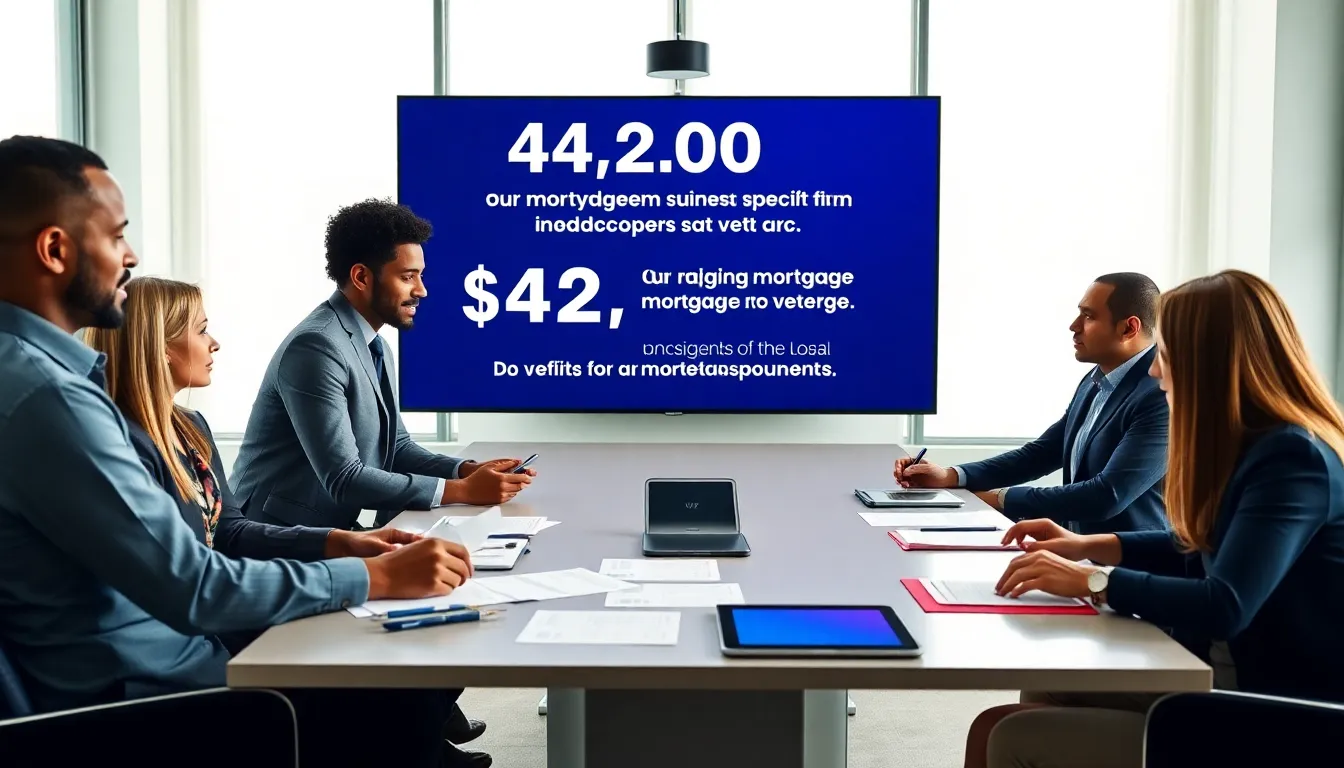If you’re a veteran homeowner, you might feel like getting a break on your mortgage payments is as likely as a snowstorm in July. But hang onto your hats, folks, because a $42,000 mortgage reduction might be just around the corner. Yes, you read that right. This opportunity isn’t just another pipe dream but a genuine chance for veterans to ease their financial burdens. Let’s jump into how this program works, why it’s beneficial, and how those who have served can take advantage of it.
Table of Contents
ToggleUnderstanding Mortgage Reduction Options

Navigating the world of mortgage reductions can feel daunting, especially for veterans who have already navigated combat zones. But, there are several mortgage reduction options available that cater specifically to those who have served.
These options generally include government programs aimed at providing financial relief to veterans. One notable example includes the VA Home Loan program, which offers benefits like lower interest rates and no down payment. But the $42,000 reduction focuses on even more extensive relief, projected to alleviate monthly payments significantly, giving veterans more financial breathing room.
Understanding how these reductions work is essential to maximizing benefits. Some programs focus on lowering the principal amount owed, while others adjust the interest rate or provide refinancing options to make payments more manageable. By grasping these options, veterans can make informed decisions, optimizing their home financing while potentially saving thousands.
Benefits Of The Mortgage Reduction Program
The benefits of this mortgage reduction program go beyond the obvious savings. First and foremost, a reduction of $42,000 directly impacts monthly budgets. Think of the possibilities, more funds available for groceries, education, or even that long-overdue family vacation.
Also, this program often contributes to improved credit scores. When monthly payments become more manageable, homeowners tend to make payments on time, so enhancing their credit profiles over time. This can lead to even better borrowing terms in the future, should veterans wish to pursue other loans.
Also, reduced financial stress translates to improved mental health. The pressure of overwhelming debt can weigh heavily on anyone, but especially on veterans who’ve already faced their share of challenges. With this reduction, veterans can focus on what truly matters, spending time with loved ones and planning for the future.
Eligibility Requirements For Veterans
To qualify for the $42,000 mortgage reduction, veterans need to meet specific eligibility requirements. These criteria are designed to ensure that the program assists those in the most need.
First and foremost, candidates must be honorably discharged veterans. This criterion ensures that those who have served are rewarded for their dedication and sacrifice. Also, veterans must demonstrate financial need: this typically involves showing that current mortgage payments heavily impact their ability to meet other essential expenses.
Income limits may apply, necessitating the submission of recent tax returns and pay stubs. Besides, the property in question must be the veteran’s primary residence, second homes or investment properties are generally not eligible. By understanding these requirements upfront, veterans can streamline their application process and ascertain if they qualify.
How To Apply For The Mortgage Reduction
Applying for the mortgage reduction might seem like a Herculean task, but fear not. The application process is straightforward and can often be completed through local or national agencies designed to help veterans.
Steps In The Application Process
- Research and Gather Information: Start by publicly available resources that outline the reduction program. Familiarize yourself with all policies to understand the requirement completely.
- Contact a VA Representative: It’s crucial to talk to a VA representative who can outline the specifics of the application process for you. They will guide you through the necessary steps and documentation.
- Fill Out The Application: With the right documents in hand, filling out the application can happen quickly. Make sure to double-check all the entries before submission.
- Follow Up: After submitting, follow up regularly to check on the application status. Persistence is key in ensuring that everything is progressing smoothly.
Documentation Needed For Application
- Proof of Military Service: This could be a DD-214 or other documentation aligning with your military record.
- Financial Documents: Prepare recent pay stubs, tax returns, and bank statements to showcase your financial standing.
- Mortgage Statements: Current mortgage statements should be submitted to provide clarity on existing financial obligations.
Gathering these documents ahead of time can expedite the process, streamlining everything from submission to approval.
Common Challenges And Solutions
While the mortgage reduction program offers substantial benefits, veterans may encounter challenges during the application process. One common hiccup involves misunderstanding eligibility requirements. To combat this, veterans can use online resources and support networks that summarize qualifications clearly.
Another issue may arise from gathering the necessary documentation. Veterans might find it challenging to locate records or secure all the required paperwork. In this case, reaching out to veteran service organizations can greatly aid in collecting these documents. Many provide tailored assistance specifically to help veterans through this process.
Finally, delays in processing applications can cause frustration. Patience is crucial here, but regular follow-ups with the issuing agency can help ensure things move along. Keeping communication lines open will provide peace of mind throughout this journey.






